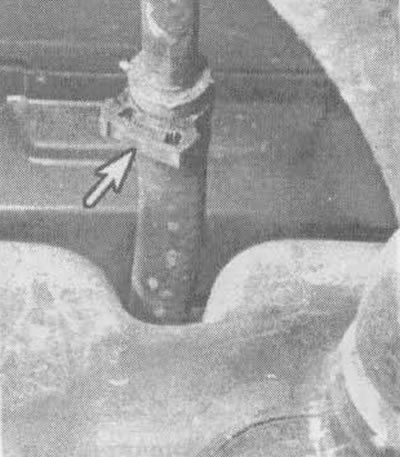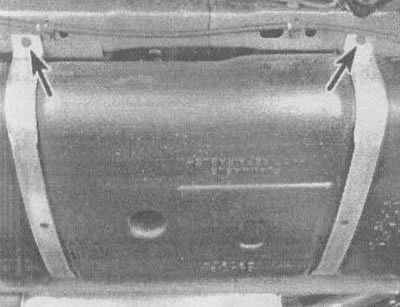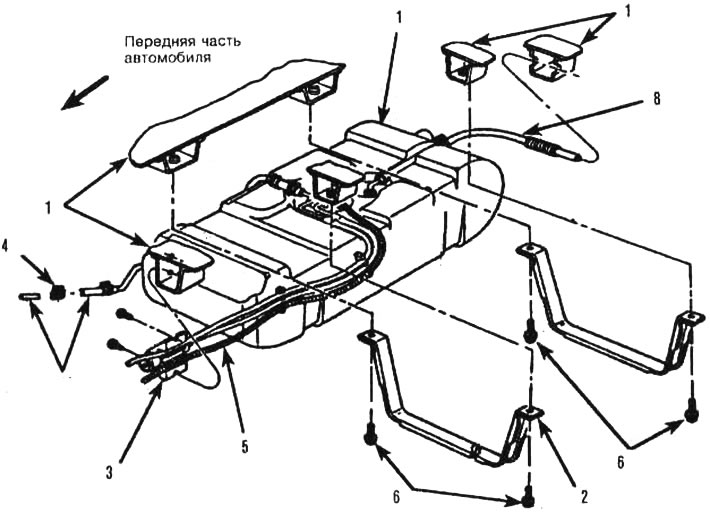Note. Do not begin this work until the fuel gauge indicates that the tank is empty or nearly empty. If the tank has to be removed full (for example, if the fuel pump is not working properly), pump out the remaining fuel from the tank.
1. If the fuel was not completely used up during the trip, then before removing the tank from the car, you can pump out the remaining fuel.
Attention! Do not suck gasoline with your mouth. Use special hoses.
2. Relieve fuel pressure (see section 2)
3. Disconnect a wire from a negative conclusion of the storage battery.
4. Raise the vehicle and place it securely on stands.
5. Locate the electrical connector for the fuel pump and fuel level sensor ahead of the tank and disconnect it. If your vehicle does not have this electrical connector, see step 9 below.
6. Disconnect the fuel supply and drain lines, vent line, filler tubes and vent tubes (see illustration).

5.6. To detach the clamp (indicated by an arrow) on the ventilation tube, use a small screwdriver to wring out the locking barb on one side
7. Support the fuel tank with a piece of wood and a trolley jack.
8. Disconnect both fuel tank mounting brackets (see illustrations).

5.8a. Turn away bolts (indicated by arrows) from fuel tank brackets

5.86. Fuel tank details: 1 - car bottom, 2 - clamp, 3 - ASM vent pipe, 4 - fuel pipe clamp, 5 - electrical wiring (ASM fuel tank), 6 - bolt, 7 - bracket, 8 - fuel tank vent tube
9. Lower the gas tank so that you can disconnect the wires and braid "masses" from the fuel pump/fuel gauge if you haven't already done so.
10. Remove the fuel tank from the vehicle.
11. Installation is carried out in the reverse order.
